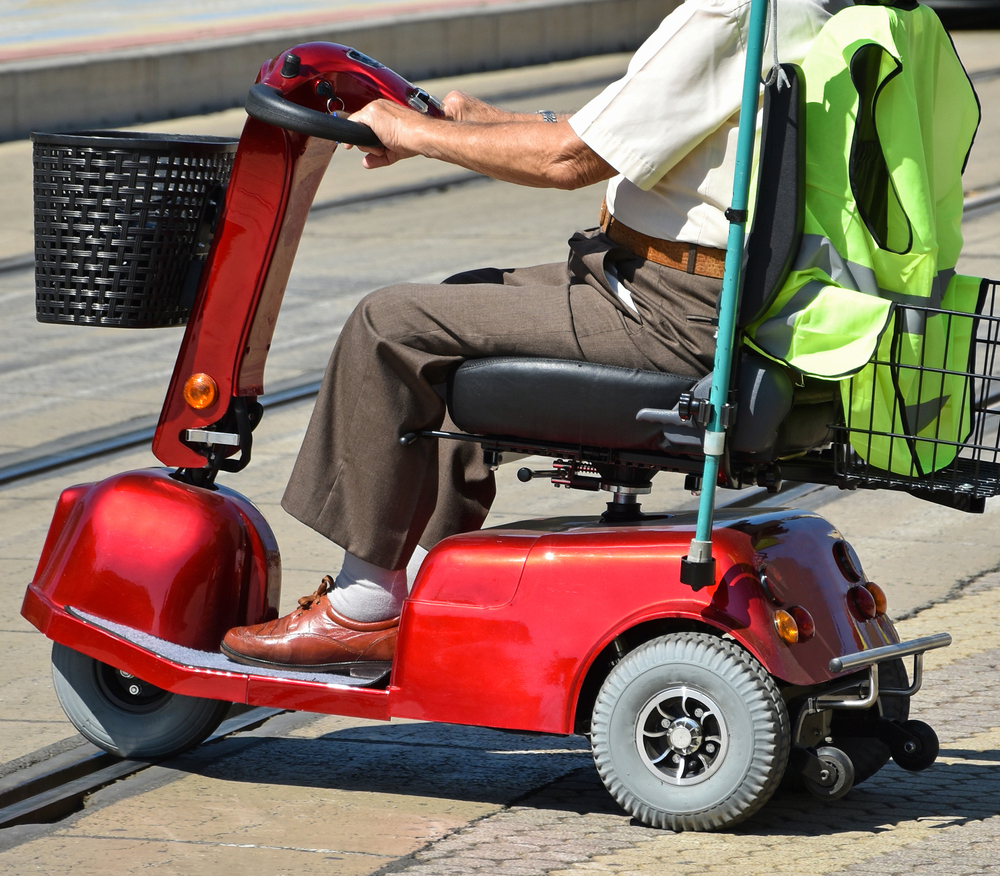Share This Article
By Sahar Adatia and Jimmy Singh.
‘Tis the season of giving – a time when people are kinder and more generous to one another, and when the spirit of Christmas guides us towards giving without a thought of getting, especially when it comes to the less fortunate.
Well, at least for some of us.
On 2 December 2018, only days into the official Christmas season, a man wearing a red Santa hat seemingly helped a disabled man into a toilet in Federation Square, only to allegedly swindle him by stealing his electric wheelchair and leaving him locked in the bathroom for an hour.
According to police, the Santa-hat-clad man struck up a conversation with the 54-year-old St Albans wheelchair user at Flinders Street Railway at about 11am.
Shortly afterwards, the 39-year-old crook offered to assist the disabled man to use the toilet, at which point the pair headed to Birrarung Marr park.
However, after assisting the man into the restroom, it is reported that he then took off in the electric wheelchair, described as maroon in colour with a dark canopy. The wheelchair also had the man’s shopping bags tied to it.
The alleged victim was stranded in the bathroom for an hour, unable to move, before being rescued by a passer-by who stopped to help.
Meanwhile, the robber, cloaked in a black jumper and camouflage pants, then travelled east towards Batman Avenue. He had been initially described as Caucasian in appearance and aged between 20 to 24-years-old.
Heartless Thief Arrested and Charged with Theft
In a press release, leading senior constable of Victoria Police, Natalie Dean, advised the offender from Seddon was detained by police and charged with theft on Monday afternoon.
He was bailed and will appear at the Melbourne Magistrates’ Court on 24 March 2019.
Meanwhile, the electric wheelchair was later found at the corner of Wellington Parade and Jolimont Road in East Melbourne.
Motor Vehicle Theft in Australia
According to the Australian Institute of Criminology, motor vehicle theft is understood as the taking of another person’s motor vehicle illegally and without permission, with the intent of temporarily or permanently depriving the owner/possessor of the use of the motor vehicle.
Within this context, a motor vehicle is defined as ‘any self-propelled vehicle that runs on the land surface and is eligible for registration for use on public roads’.
In 2011, there were 55,382 motor vehicle thefts recorded by police. This represented a substantial reduction from recorded motor vehicle thefts in 2001, when approximately 140,000 vehicles were reported stolen and in 2005 where 84,900 motor vehicles were reported to police as stolen.
Here, the average value of the vehicles stolen was approximately $5,000 and robbed by young male drivers.
Meanwhile the recovery rates of stolen vehicles sat stably at approximately 85%.
The Costs of Motor Vehicle Theft in Australia
Nevertheless, motor vehicle theft costs the Australian community approximately $1 billion per year.
As the Australian Institute of Criminology advises, while the total cost of motor vehicle theft is estimated at $6,413 per incident, when indirect costs are added – including inconvenience to the victim, loss of earnings (on average at least one working day is lost when a vehicle is stolen), and subsequent higher insurance premiums, then the overall cost easily approaches the $1 billion mark.
While some vehicles are thieved by organised gangs, for whom stealing offences is a business, most vehicles are stolen by young joyriders.
Solutions to the problem of motor vehicle theft include making cars more difficult to steal and making the activity of stealing less attractive to the perpetrator.
The Law on Stealing a Motor Vehicle or Vessel in NSW
In NSW, the offence of stealing a motor vehicle or vessel is taken seriously and carries a maximum penalty of 10 years in jail under section 154F of the Crimes Act 1900 (NSW).
If the charge is dealt with from start to end in the local court, instead of the District Court, then the maximum penalty is either a 2-year imprisonment or $11,000 fine. (section 267 of the Criminal Procedure Act 1986 (NSW)).
Here, a ‘motor vehicle’ means a vehicle that is built to be propelled by a motor that forms part of the vehicle, where ‘vehicle’ is understood as:
- Any description of vehicle on wheels (including a light rail service) but not including any other vehicle used on a railway or tramway, or
- Any description of tracked vehicle (such as a bulldozer), or any description of vehicle that moves on revolving runners inside endless tracks, that is not used exclusively on a railway or tramway, or
- Any other description of vehicle prescribed by the statutory rules.
‘Vessel’ refers to water craft of any description that is used or capable of being used as a method of transportation on water.
Stealing is also known as larceny under the law. For an outline of this, see our previous blog on larceny charges.
In order to be convicted of stealing a motor vehicle or vessel, the prosecution must prove beyond reasonable doubt that:
- You took and carried (or drove) the motor vehicle or vessel away; and
- The motor vehicle or vessel was owned or possessed by someone else; and
- At the time of doing this, you had an intention to permanently deprive the owner of it; and
- There was no consent by the owner to take and carry it away.
Some common defences to this offence include a claim of right, which is the taking and carrying away of the property/car/vessel whilst honestly claiming a legal entitlement to it to justify your actions. Other defences include duress or necessity, or mistaken identity.
Book a Lawyer Online
Make a booking to arrange a free consult today.
Call For Free Consultation
Call Now to Speak To a Criminal Defence Lawyer
Over 40 Years Combined Experience
Proven SuccessAustralia-Wide
Experienced LawyerGuarantee
 (02) 8606 2218
(02) 8606 2218
 (02) 8606 2218
(02) 8606 2218














